Product details
- Publisher : Packt Publishing; 2nd ed. edition (September 30, 2021)
- Language : English
- Paperback : 310 pages
- ISBN-10 : 1801076308
- ISBN-13 : 978-1801076302
کتاب Python Microservices Development: Build efficient and lightweight microservices using the Python tooling ecosystem, 2nd Edition
Use Python microservices to craft applications that are built as small standard units using proven best practices and avoiding common errors
Key Features
- Become well versed with the fundamentals of building, designing, testing, and deploying Python microservices
- Identify where a monolithic application can be split, how to secure it, and how to scale it once ready for deployment
- Use the latest framework based on asynchronous programming to write effective microservices with Python
Book Description
The small scope and self-contained nature of microservices make them faster, cleaner, and more scalable than code-heavy monolithic applications. However, building microservices architecture that is efficient as well as lightweight into your applications can be challenging due to the complexity of all the interacting pieces.
Python Microservices Development, Second Edition will teach you how to overcome these issues and craft applications that are built as small standard units using proven best practices and avoiding common pitfalls. Through hands-on examples, this book will help you to build efficient microservices using Quart, SQLAlchemy, and other modern Python tools
In this updated edition, you will learn how to secure connections between services and how to script Nginx using Lua to build web application firewall features such as rate limiting. Python Microservices Development, Second Edition describes how to use containers and AWS to deploy your services. By the end of the book, you'll have created a complete Python application based on microservices.
What you will learn
- Explore what microservices are and how to design them
- Configure and package your code according to modern best practices
- Identify a component of a larger service that can be turned into a microservice
- Handle more incoming requests, more effectively
- Protect your application with a proxy or firewall
- Use Kubernetes and containers to deploy a microservice
- Make changes to an API provided by a microservice safely and keep things working
- Identify the factors to look for to get started with an unfamiliar cloud provider
Who this book is for
This book is for developers who want to learn how to build, test, scale, and manage Python microservices. Readers will require basic knowledge of the Python programming language, the command line, and HTTP-based application principles. No prior experience of writing microservices in Python is assumed.
Table of Contents
- Understanding Microservices
- Discovering Quart
- Coding, Testing, and Documenting: the Virtuous Cycle
- Designing Jeeves
- Splitting the Monolith
- Interacting with Other Services
- Securing Your Services
- Making a Dashboard
- Packaging and Running Python
- Deploying on AWS
- What's Next?
منابع کتاب کتاب Python Microservices Development: Build efficient and lightweight microservices using the Python tooling ecosystem, 2nd Edition
از میکروسرویسهای پایتون برای ساخت برنامههایی استفاده کنید که به عنوان واحدهای استاندارد کوچک با استفاده از بهترین روشهای اثباتشده و اجتناب از خطاهای رایج ساخته شدهاند.
ویژگی های کلیدی
- با اصول ساخت، طراحی، آزمایش و استقرار میکروسرویس های پایتون به خوبی آشنا شوید.
- مشخص کنید که یک برنامه یکپارچه می تواند در کجا تقسیم شود، چگونه آن را ایمن کنید، و چگونه آن را پس از آماده شدن برای استقرار مقیاس کنید.
- از آخرین فریم ورک مبتنی بر برنامه نویسی ناهمزمان برای نوشتن میکروسرویس های موثر با پایتون استفاده کنید
توضیحات کتاب
دامنه کوچک و ماهیت مستقل میکروسرویس ها آنها را سریعتر، تمیزتر و مقیاس پذیرتر از برنامه های کاربردی یکپارچه با کد سنگین می کند. با این حال، ساخت معماری میکروسرویسها که در برنامههای شما کارآمد و سبک باشد، به دلیل پیچیدگی همه قطعات در حال تعامل، میتواند چالش برانگیز باشد.
توسعه میکروسرویسهای پایتون، نسخه دوم به شما میآموزد که چگونه بر این مشکلات غلبه کنید و برنامههای کاربردی را که به عنوان واحدهای استاندارد کوچک با استفاده از بهترین شیوههای اثباتشده و اجتناب از دامهای رایج ساخته شدهاند، ایجاد کنید. از طریق مثالهای عملی، این کتاب به شما کمک میکند تا با استفاده از Quart، SQLAlchemy و دیگر ابزارهای مدرن پایتون، میکروسرویسهای کارآمد بسازید.
در این نسخه به روز شده، شما یاد خواهید گرفت که چگونه اتصالات بین سرویس ها را ایمن کنید و چگونه Nginx را با استفاده از Lua اسکریپت کنید تا ویژگی های فایروال برنامه های وب مانند محدود کردن نرخ ایجاد کنید. توسعه میکروسرویسهای پایتون، نسخه دوم نحوه استفاده از کانتینرها و AWS برای استقرار خدمات خود را شرح میدهد. در پایان کتاب، یک برنامه کامل پایتون بر اساس میکروسرویس ها ایجاد خواهید کرد.
آنچه خواهید آموخت
- بررسی کنید که میکروسرویس ها چیست و چگونه آنها را طراحی کنید
- کد خود را بر اساس بهترین شیوه های مدرن پیکربندی و بسته بندی کنید
- بخشی از یک سرویس بزرگتر را که می تواند به میکروسرویس تبدیل شود، شناسایی کنید
- درخواستهای دریافتی بیشتر و مؤثرتر رسیدگی کنید
- از برنامه خود با یک پروکسی یا فایروال محافظت کنید
- از Kubernetes و کانتینرها برای استقرار یک میکروسرویس استفاده کنید
- تغییراتی را در یک API ارائه شده توسط یک میکروسرویس با خیال راحت انجام دهید و کارها را ادامه دهید
- عواملی را که باید برای شروع کار با یک ارائه دهنده ابر ناآشنا جستجو کنید، شناسایی کنید
این کتاب برای چه کسی است
این کتاب برای توسعه دهندگانی است که می خواهند یاد بگیرند که چگونه میکروسرویس های پایتون را بسازند، آزمایش کنند، مقیاس کنند و مدیریت کنند. خوانندگان به دانش اولیه زبان برنامه نویسی پایتون، خط فرمان و اصول برنامه کاربردی مبتنی بر HTTP نیاز دارند. هیچ تجربه قبلی از نوشتن میکروسرویس ها در پایتون فرض نمی شود.
فهرست مطالب
- آشنایی با میکروسرویس ها
- کشف کوارت
- کدگذاری، آزمایش و مستندسازی: چرخه فضیلت
- طراحی Jeeves
- تقسیم یکپارچه
- تعامل با سایر خدمات
- امنیت خدمات شما
- ساخت داشبورد
- بسته بندی و اجرای پایتون
- استقرار در AWS
- بعد چه می شود؟

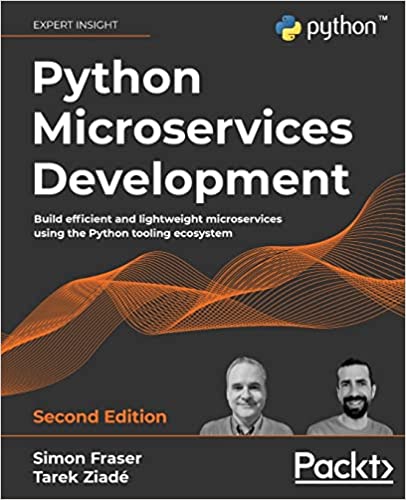



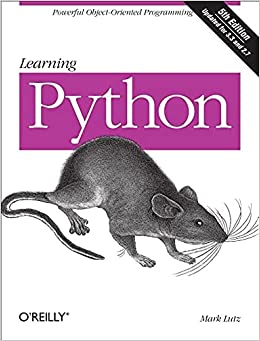






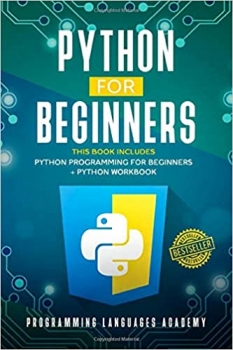

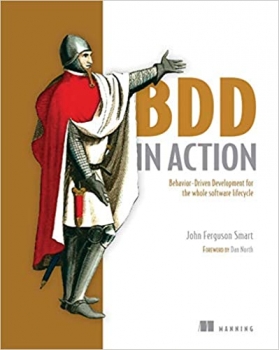







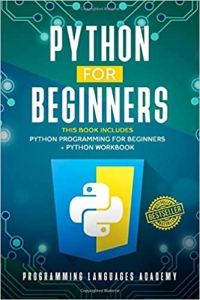






ارسال نظر درباره کتاب Python Microservices Development: Build efficient and lightweight microservices using the Python tooling ecosystem, 2nd Edition